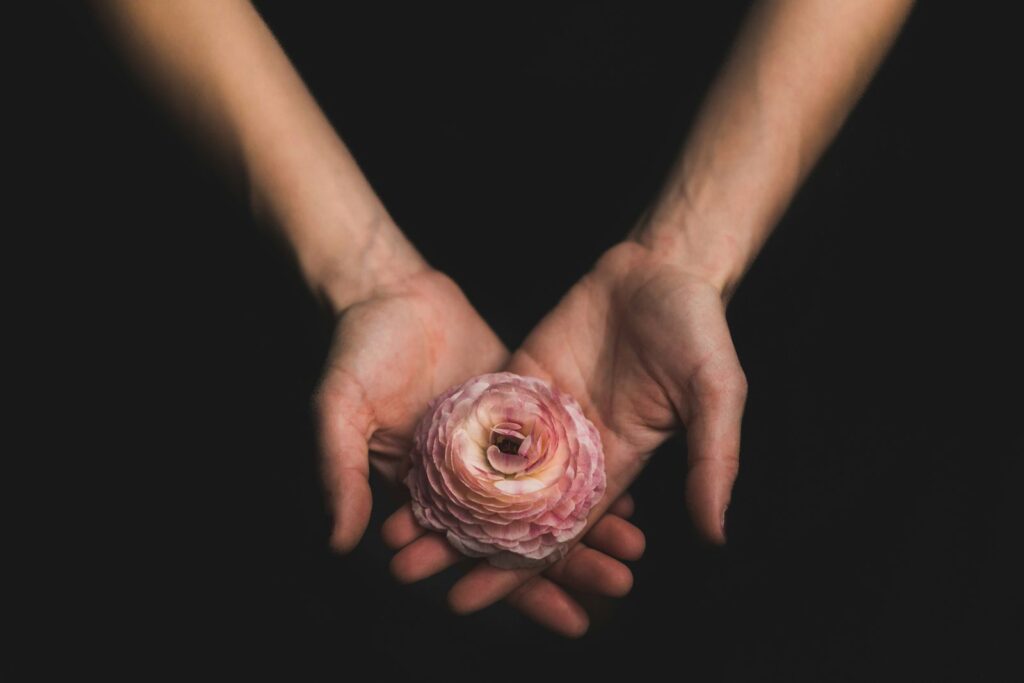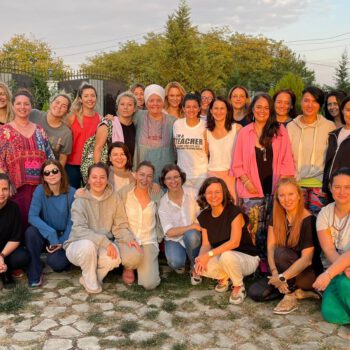I’ve been asked to write about Will, Compassion, and Forgiveness. I never initiate the topic of forgiveness with my clients; they rarely broach it with me. I am also not an expert on forgiveness, but there are places where I experience it. Will and compassion have their part and I weave it here into the tapestry of forgiveness.
Often, we hear about forgiveness as something we do. For me, forgiveness is a process inside me. Gabor teaches that forgiveness is a state of grace and connection to ourselves. When I connect to this place of beauty, it is, well…beautiful. Inside this state of grace and connection, we are ignited by a sense of aliveness so exquisite that beauty, will, compassion, and forgiveness become the lens through which we see ourselves, the world, and the people around us. We become free from making ourselves and others wrong. When I do my internal work and connect to this place my mind and body feel calm, spacious, and flexible, there is room for all of me. And there is room for others however they show up.
For me, forgiveness is a process that emerges inside of an experience of growth, healing, and recovery of Self. From this place I have no part in making forgiveness happen, it just does. I do, however, have a part in taking care of myself to support reconnection to forgiveness, this state of grace and connection to Self. Again, that is ongoing work. I share an example to illustrate just how hard that is.
A few years ago, someone that I care about, and I, disagreed about something, and things quickly spiraled. I felt hurt and a story from my past emerged that I automatically began telling myself. The story I told myself was, unless I show up a certain way, I am unacceptable (I describe how this story originated in childhood and my healing process with Compassionate Inquiry and plant medicine in an interview I did a few weeks ago on the CI Gifts of Trauma Podcast).
During this trigger a few years ago, I had known about trauma and healing trauma. What I knew personally also informed my work as a successful psychotherapist in private practice, Compassionate Inquiry Founding Facilitator, Mentor, and leader in other CI programs. Yet, this trigger rendered me unconscious and I reacted from an old belief and as Eckhart Tolle would say, “old pain.” Something in me had gotten deeply penetrated, a core belief that I have no value. I was hurt and dropped into a world of pain, the wound of abandonment. I didn’t know how deep it was until I landed there and stayed for many months. Despite thousands of dollars in therapy, I was depressed, anxious, tense, sad at home, and functional just enough in my work. Inside of the trigger response, all I could do was blame and feel pain. On top of that, I hated who I was, someone driven by rage to be seen, heard, and understood. It was a complex web of pain, anger, fear, and the inner critic creating such suffering in me, and it impacted others around me.
Had I been conscious of the story that I was telling myself and been fully aware that it was my past showing up in the present, I might have recognized that there were two ways that I could have responded. To illustrate those options, I share a Buddhist story below and then will come back to my story. I call it Two Arrows and it reads like a fairytale.

A king walks through the forest with an entourage and an arrow shoots out of the forest into the king’s heart. The king falls back and immediately feels hurt, fear, and anger. “Oh!! I’ve been shot! I’m going to die. I’m so angry and afraid!”
This first arrow is the pain that life will inevitably bring.
There are two ways that the king could react. One is with the ego. He could shout, “Who dares to shoot me with an arrow?!! Servant, go shave off some of the wood from the arrow and search out all the trees in the kingdom to see if we can match someone’s tree to the wood on this arrow. Other Servant, pluck this feather and go find all the birds in the kingdom and see if we can find whose bird this feather matches!”
The second way the king could react is to accept that he’s been shot with the arrow. He does not accept. Instead, he brings his ego and all the mind and its analyses to this problem. What does the king neglect by adding all of the mind and its concerns to his situation? He neglects to take care of himself and the impact of the first arrow. The king spends so much time worrying and investigating his case that a second arrow comes out of the forest, then a third and a fourth, and it kills him.
In my story who casts the second arrow? I do. How do I do that? By believing who I think I am in the moment, the vulnerable child who experiences a disconnect and interprets from that, that she is unworthy and therefore being abandoned. In my 49-year-old body, I was in agony. For a few months, I became suicidal for which I was able to find and receive help. The words of D.W. Winnicott help me understand how I spiraled so deep. He said, “…In the early stages of emotional development, before the senses have been organized, before there is something called an autonomous ego, very severe anxieties are experienced. In fact, the word anxieties has no use. The order of infant distress at this stage is the same order as that which lies behind panic. And panic is already a defense against the agony that makes people commit suicide rather than remember…Growth has had to be distorted and delayed, and some degree of primitive agony has to be carried into life and living.”
As an adult in this sad situation, I experienced the past and its stories showing up in the present moment. My husband was my rock. I honestly don’t know if I would still be here if not for him. Try as he did, he could not help me let go and I could not be in the state of grace and forgiveness that I had known from previous healing and experience. I was in primitive agony, carrying it into life and living. And then it became my great teacher.
My dear friend, Angie, had taken the CI course during its first year with another facilitator (not me), and one day over lunch about a year after the ordeal began, I confided in her. I told her about all the suffering I was experiencing and she asked me if I believed I was being blamed for anything and, if so, for what? I told her about the trigger with this person I cared for and what I made it mean about me, my perception that this person believes I am unworthy and don’t matter. Then she asked me with genuine curiosity and compassion for the truth, “When did you accept that you are unworthy and don’t matter?” I was speechless. (For folks familiar with Gabor’s work; enter the green bush!).
I saw then that my reaction to the trigger was so automatic that there was no space between what happened and my interpretation of what happened. Before I knew it, my perception of what someone else thought of me was interpreted through the lens of a story that originated in childhood. When Angie asked that question, I had total recognition, and it transformed my relationship to my pain and to what happened. I was now in a state of grace forgiving the part of me that believed the story that I am unworthy, and for unwittingly projecting it onto this person as their belief of me. Back then the child in me had no choice but to believe it, but I am no longer that child. Reconnected to Self and my healing capacity within, I returned to the “first arrow” and using Gabor’s mantra, “wherever there is tension, it requires attention,” I took care of myself.
Gabor teaches that inner tension is in the way of connecting to the state of grace and as I see it, forgiveness as a process inside of me. When we put our conscious attention on the tension for long enough, and sometimes we need help to do it, we make buying into the stories we tell ourselves a choice. We then bring Will, Compassion, and Forgiveness to life and living.




Comments are closed.